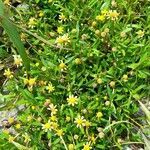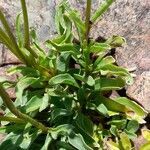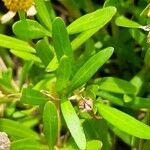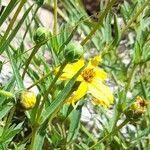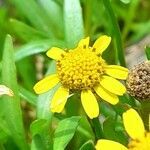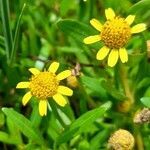Annual herb, up to 0.5 m high; stems decumbent, leafy. Leaves opposite, linear to lanceolate, margins entire or subserrate. Capitula terminal, solitary; involucral bracts in 2 series, ovate, subequal. Receptacle conical. Ray florets limb narrow; corolla yellow, strap-shaped. Disc florets bisexual, fertile; corolla yellow. Anthers with small, obtuse, apical appendage. Style branches of ray florets linear, of disc florets oblong, truncate, minutely penicillate. Pappus of 3 bristles. Cypselae elliptic, compressed, apex truncate.
A herb. The flowers are yellow.
